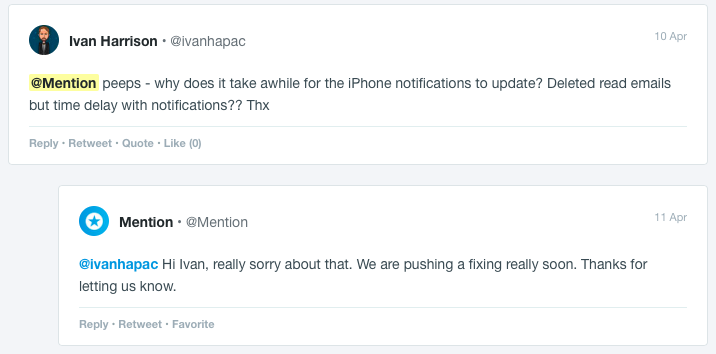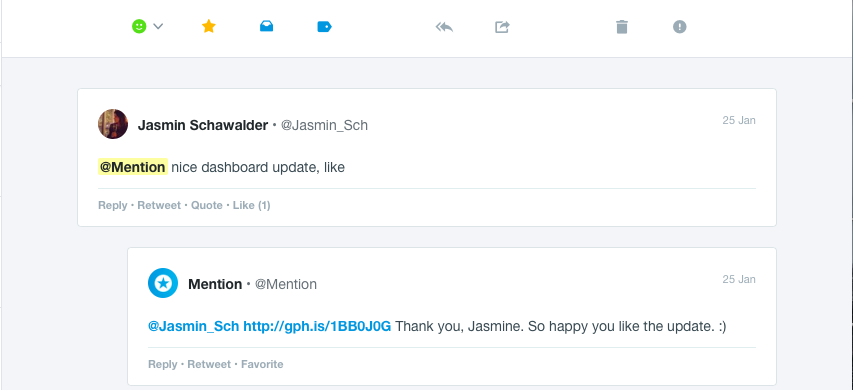Steve Jobs famously declared in 2010 that “no one is going to buy a big phone,” and insisted on sticking to a 4” iPhone screen.
As Apple’s competitors introduced bigger and bigger screens, customers started to complain about the screen size, and Apple’s sales growth and market share both dropped.
They found that small screens were a liability. They were losing out on a huge market of customers who want big screens.
It turns out, people wanted big phones.
As soon as they started producing bigger phones, sales soared to an all-time high.
Moral of the story? Your customers know what they want better than you do.
Don’t ignore their thoughts and opinions when building your products. In fact, you should do all that you can to actively seek them out. Luckily, with social media it’s not hard.
Let customers lead your product
If a brand like Apple acknowledges that customers know best, who are we to argue?
Customers know what they want. And in an age where there’s 50 of anything on Amazon, meeting their needs has never been more important.
Customers no longer just sit and wait for products we decide to produce for them. They want their say. They don’t want to settle and will look for the best choice. They read and write online reviews and speak up on social media.
And those are all opportunities to learn from them, collect product feedback, and build a better product.
Want to learn how online listening helps keep your customers happy? Download our free ebook.
In this post, you’ll learn how to gather customer feedback with monitoring. You’ll also see why the more you take your customers’ opinions into consideration, the higher the chance of success you’ll have for your product.
Let’s dive right into it.
How to build a better product with product feedback online
Here are five concrete ways you can get customer feedback by listening online, and how your product development can benefit from it.
1. Find out about product issues


Customers frequently find product issues before you do. And when it comes to customer service, they like to use social media as a support channel and expect quick replies.
You need to know when your customers are talking about problems on social media, so you can help right away.
For example, our customers tweet us when they have trouble. We can easily find the tweets, send them to the appropriate team member, and reply with help.
In addition to real-time customer support, you also want to keep track of recurring issues, so you know to look into permanent fixes for them.
And an issue doesn’t always mean something is wrong. It could just mean something could be better. That there’s a way to improve your product and user experience. Paying attention to customer feedback helps you identify areas of improvement:
Pro tip: set up alerts for your product name and keywords like “issues,” “troubles,” or “problems.” If you’re overwhelmed with mentions, filter them by sentiment. Focus on frustrated customers reaching out for help first.
2. Know what your customers want
Knowing what frustrates customers and offering help is important, but the reverse is crucial, too.
Which features are your customers raving about? How are they using your product? This is helpful info for products in the early phases of development. Or if your product team is looking to cut or add features.
You can discover something’s popularity by tracking how much customers talk about it online. At Mention, this feedback drives our product team’s roadmap.
For example, we found that customers loved our Twitter dashboard, so we’re creating one for Instagram, too.
You can also get new ideas by tracking what features your customers like about your competitors.
Pro tip: Set up alerts for your product and feature names. Like, “‘Apple’ and ‘Siri’” or “‘Apple’ and ‘3D touch’.” You can then do the same for your competitors.
Find what makes your customers happy, and give them more of it.
3. Get real-time feedback on product launches
Product launches are nerve-wracking.
It’s exciting to launch, but there are often unforeseen hiccups or problems. You spend months or even years building something, without knowing if enough of your customers will be as excited as you are.
People will talk, and it may not all be good. But your customers are sometimes – if not always – smarter than you are. They’ll give you suggestions to improve. And you can find and keep track of them through online listening.
We’ve done several launches on Product Hunt, and each time, we’d set up alerts to keep track of all the mentions online. This help us catch a lot of product feedback that allows us to better understand what our customers expect from us.
Sometimes they can give us a great feature suggestion:
(Thanks to this comment on Product Hunt, Mention now has filters.)
Sometimes it’s just a pat on the back:
Tracking this feedback helps us know what’s working and what’s not, so we can do better.
Pro tip: Instead of just looking at the number of mentions you get, use sentiment analysis to put social media mentions in context. Okay, so a lot of people are talking about your launch. Is it positive or negative?
4. Stay on top of industry news and trends
You need to stay up to date on everything your customers are interested in.
What’s trending among your target audience, in your industry? What are the latest gadgets, tools, or strategies? What are your competitors up to?
These are things you need to keep an eye on to make sure your product is up-to-date and in sync with your customers’ pace.
So on top of monitoring your brand and products, keep track of Twitter chats, forum discussions, and industry news to find improvement ideas.
If you’re a monitoring tool like us, for example, you would keep an eye on all the up-and-coming social media platforms to see if it’s time to build new integrations or sources.
Here’s an example of our team following up on a customer’s feature request in our Slack team after an announcement from Instagram:
Stay on top of news that matters to your customers.
5. Know where your customers are
Here I’m talking about both virtually and physically.
Virtually, you want to know what platforms your customers are using. Are they more active on Twitter? Or Pinterest? Or blogs? You may want to increase visibility and focus on those specific platforms. You can find out where your customers spend time by looking at where your mentions come from.
Physically, knowing where your customers are will help you localize your products and adjust things like marketing strategies, product design, and market positioning.
In Mention, check the insights center to view location sources and languages used:
One of our users, 1 Second Everyday, discovered a whole new market in South Korea when they found a spike in mentions among South Korean Instagram users. So they started to translate their ads and adapted their product to this new market.
Monitoring helps you focus on building a product for the best markets.
Take it one step further
To make the most of monitoring, encourage your customers to talk to you online. React quickly whenever they reach out, and incentivize them to offer feedback. Let them know you care about their opinions, and that their voices are heard.
As brands become more reactive to customers’ opinions, you’ll be left behind if you don’t have a monitoring system in place.
Want to learn more about the benefits of listening to your customers? Download our free ebook:












